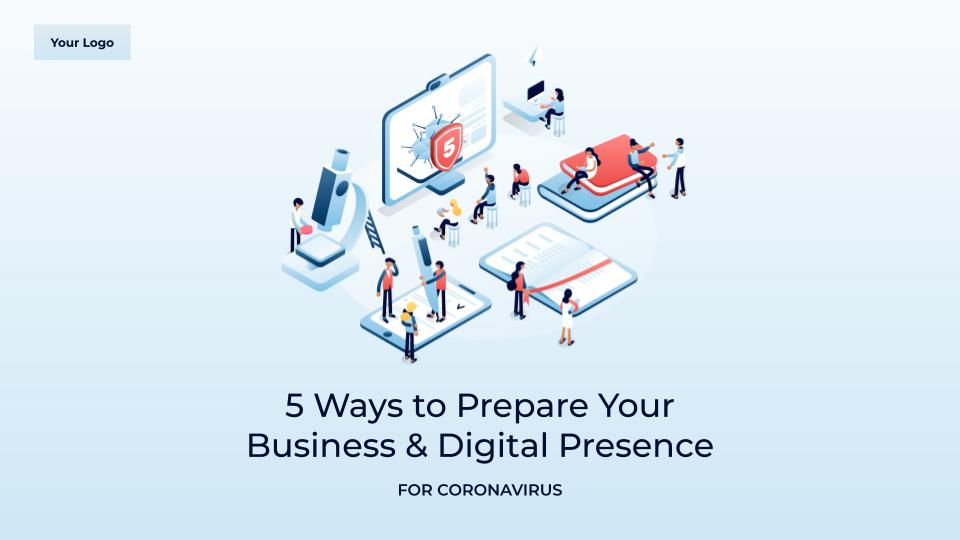As the impact of the coronavirus is felt by more and more businesses around the world, restaurants will be particularly affected by the crisis. The need for social distancing has meant that many have already had to close their dining rooms, with many more expected to do so in the coming weeks and months. However, at the time this post was written, many national, regional and local governments are still allowing restaurants to continue operating in a take-away or delivery capacity.
Need help talking to clients about Coronavirus? Start a Duda free trial today and download a White Label Coronavirus Response PPT.
Start Now.
In this post, we’ll cover the steps to set up your restaurant customers’ websites for online ordering success including understanding the differences in online ordering systems, the various ways you can integrate them into a website, and how to help your restaurant customers mitigate the damage from COVID-19.
While we are writing this from Duda’s perspective, these best practices can be applied to web design platforms and CMSs writ large such as WordPress, Wix, Squarespace, Webflow, and so on.
Step 1: Understand Your Online Ordering System Options
There are lots of online ordering systems and delivery solutions designed specifically for restaurants, and if a customer is already locked in with one there’s no reason to ‘reinvent the wheel’ on account of the coronavirus. However, if you have restaurant customers that are just setting up online ordering for the first time, it is worth understanding at least the big differences in the approaches of these platforms and services.
Online Ordering & Delivery Solutions Like GrubHub & Doordash
A couple benefits of these platforms:
- They come with a built-in user base for your customers to access right away, which may be particularly useful during coronavirus.
- They provide a 3rd-party delivery service so your customers don’t have to manage their own delivery staff.
Though these online ordering and delivery solutions are convenient for both restaurateurs and their customers alike, they do take a portion of revenue from each sale by the restaurant owner. However some of them, such as Uber Eats, have started to
waive delivery fees
for independent restaurants across the U.S. and Canada due to the ongoing crisis. Similarly, GrubHub announced it is temporarily suspending collection of up to $100 million in commission payments
from impacted independent restaurants nationwide.
Standalone Online Ordering & POS Systems Like ChowNow & GloriaFood
Solutions like
ChowNow
and
GloriaFood
offer commission-free online ordering systems and some services such as
Toast
also include the hardware for a POS specifically designed for restaurants. For detailed information on these and other online ordering systems, we recommend this
SmallBizTrends article
that goes into 10 of these solutions in detail.
These solutions do not include a delivery service, so this may be something you want to discuss with your restaurant customers during the COVID-19 pandemic.
Existing eCommerce Tools
eCommerce solutions may not be the first thing you think of when trying to set up an online ordering system for your clients, but the option is there. For example, Duda is deeply integrated with Ecwid’s eCommerce platform and they provide a great example of a site that has been set up for online ordering over at
https://tacoshopsandiego.ecwid.com/.
Start a Duda free trial today and download our White Label Coronavirus Response PPT.
Start Now —>
Step 2: Add an Online Ordering System to a Website
Duda partners can essentially take four different routes to integrate an online ordering system into a restaurant website.
Option #1: Add a CTA Button That Links to 3rd-Party Solution
This is the simplest option for adding online ordering to your store. To add a CTA with a deep link to a profile in an app or another 3rd-party online service, simply drag it into the desired place on the site from the Widgets menu and add your link.
Option #2: Drop an HTML Widget
Duda's HTML widget offers another option for integrating online ordering into your customer's site. All you need to do is simply drag the HTML widget where you want it on the site and drop in the code. Many online ordering systems readily offer HTML code options for different style buttons and integrations, like these from Toast.
Option #3: Build a Custom Widget
A more advanced and custom option would be to create a custom widget using Duda’s unique
widget builder. This powerful tool allows you to create beautiful custom widgets for your customers that integrate your website seamlessly with your chosen 3rd-party solution.
The widget builder is powerful and requires some knowledge of HTML/CSS/JavaScript in order to use it. If you aren’t comfortable working in these languages, Duda offers a
Pro Fulfillment Channel, which is made up of a hand-picked group of Duda partners that you can contract to help you create the widgets you want for your clients.
Option #4: Use Existing eCommerce Solutions
If your customers are already working with an existing eCommerce solution, you may be able to leverage it during the COVID-19 pandemic to set up an online ordering system.
Above, we cited
Ecwid’s example of an online store
set up to cater to the needs of a restaurant and its guests. As we pointed out, Duda partners can use the same tools to create online ordering systems for their customers right now.
Ecwid enables you to:
- Customize menu options
- Track orders all in one place
- Accept payments everywhere
Step 3: Promote the New Delivery or Take-Away Service
Every digital marketer knows the everyday challenges of trying to have your desired message breakthrough, but this is even more challenging when consumers everywhere are flooded with information about a global pandemic. A strong social media presence, a regular drumbeat of content (e.g. blog posts, videos, social posts with updates, etc.) and accurate, current information on a website will be needed to keep customers engaged and primed to fill dining rooms when the crisis subsides.
Here are a few guides and resources we think are helpful for digital agencies and solutions providers that need to help restaurant customers communicate effectively to their guests during the COVID-19 outbreak.
Summing Up
The COVID-19 pandemic is a life-altering event for everyone and Duda is dedicated to helping our partners and web professionals everywhere boost their customers’ businesses during this challenging time. Times are tough, but we’ll get through this together.









